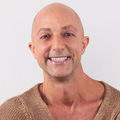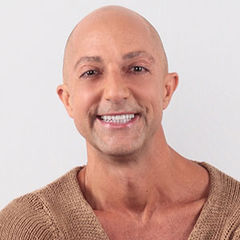Group fitness instructors and trainers employ various communication strategies on a daily basis: verbal, visual and kinesthetic. To be sure, the last two of this trio work in conjunction with the first, but we primarily use words to communicate with our clients about movements and proper technique. While there may be some types of group fitness classes that deemphasize verbal communication, at least some verbal communication is necessary to convey a deeper sense of meaning (Castells, 2009). To help you become more aware of the power of your words and how you can better communicate with your clients, here are some of the most common verbal phrases that trainers and teachers use, along with some psychologically more functional alternatives.
1. SHOULD
Commonly said: “You should feel this in your abs.”
Alternative: Everyone reacts differently to fitness recommendations. Many factors contribute to the fact even the same workout or class will feel different from day to day to even the most elite athletes. Stress, sleep, rest, hydration and nutrition all help explain some of the most significant reasons why no two moments in training time feel the same way to all people.
For this reason, it behooves trainers and teachers to make both “purpose and protocol” statements for their students, but not to assume that all clients will react in the same way at any given moment. For example, in abdominal crunches, a “purpose and protocol” statement first addresses the muscles being worked. Second, it addresses some of the set-up and execution recommendations for a variety of approaches, including progressions and regressions.
Telling all people at any one time “You SHOULD be …” negates the concepts of individuality. Furthermore, this could make some novice movers feel inadequate or unable to achieve good form. For example, during crunches, a novice may be feeling tension in the neck. If not engaged in proper set-up, the poorly positioned mover could feel pain in the lower back during crunches. If the client’s legs are moving improperly, he or she may feel tension in the hip flexors instead of the abdominals. For these reasons, trainers in the habit of telling their clients what they “should” be doing or feeling actually could be eliciting an alienating response instead of the desired effect.
An alternative is to tell students and clients both the why and how of key moves so they can figure out how their individual bodies best respond to those key directions. Remembering the adage “movements are made for people and not vice-versa” can go a long way when communicating movement to clients and classes.
2. DON’T
Commonly said: “Don’t hold your breath,” and “Don’t lock your knees.”
The brain cannot comprehend a negative (Bandler, 1979). For the sentence “Do NOT think about white elephants” to be comprehended, the listener must understand the meaning in English of all six words in the sentence, and then try to negate that thought. Comprehension in this sense, then, always occurs in a positive domain first.
After starting any command with the contraction “don’t,” what follows is almost surely time spent discussing unwanted behavior. Spending time discussing unwanted behavior actually removes meaning from what we desire, because we end up spending time addressing what we do not want. In the two examples above, for example, we spend time saying—and students spend time listening to—“Hold your breath” and “Lock your knees.” Instead of cueing to the problem, then, try to get into the habit of cueing to the solution. This can bring about the desired behavior much more readily for all concerned.
To make this transition, practice starting correctional cueing with the words “Keep ___” or “Try to ___.” In the previous examples, the cues become positive cues immediately: “Keep breathing” and “Try to flex your knees slightly.” This technique also works with friends and spouses. Instead of spending time expressing what you do not want (e.g., “Don’t forget my milk on your way home from work”), starting cues with positives can elicit a more positive, immediate response (e.g., “Try to remember my milk, please”).
3. GOOD and BAD
Commonly said: “What did you eat last night? Were you good or bad?”
Clients often review with us what they eat in a way that attaches morality statements. Examples such as, “I was so bad last night because I ate a hot fudge sundae,” and “I was good last night because I had local, raw, organic broccoli florets” show a general thought process that connects nutrition with morality.
“To be sure, the words ‘good’ and ‘bad’ can refer to foods in an effort to describe if they are edible or not, says Dominique Adair, a registered dietitian and director of Adair Fitness and Nutrition based in NYC and LA. “‘This milk is good’ may refer to milk that is within its expiration date, and ‘That milk is bad’ may refer to milk that has gone sour. However, too often we associate foods with ethics and also our eating behaviors with our moral position. Our lifestyle behaviors are either health-promoting or they are not and, of course, a balance of these is what we are trying to achieve.”
The point, according to Adair, is re-education, which includes a shift in thought and vocabulary. “Helping clients to reword from ‘I was bad last night’ to ‘I made some unhealthy choices last night that I can change today’ shows education and self-correction to help disentangle the tether we create between morality and food,” says Adair.
4. EXERCISE
Commonly said: “Let me show you how to do that exercise,” and “Did you exercise today?”
People have been using the word “exercise” for dozens of years, with no consensus on what a positive outcome might be. To be sure, according to some statistics, despite the use of the word in the media, North Americans lead most charts in the world for obesity and a sedentary lifestyle (Federal Interagency Forum on Aging-Related Statistics, 2012). Clearly, the word “exercise” alone does not work. Many fitness professionals today want to take on the responsibility of convincing more deconditioned people to work out, join gyms and book their services. Convincing people unfamiliar with the benefits of movement to add “exercise” to their routines, however, is no easy task.
“We are already in fitness and don’t need convincing,” says Valerie Grant, an ACE Certified Personal Trainer and Guild-certified Feldenkrais teacher who owns “The Posture Coach” Studio based in Pennsylvania. “But clearly fitness enthusiasts have been using a word that does not capture the essence of what people—unfamiliar with the profession—need on a daily basis. So let’s just help them think about learning how to move more easily since they can’t avoid it.”
Fitness professionals embracing the concept of movement, and making the idea of movement mandatory, functional and even fun could attract more people than those who use the word “exercise,” which connotes sweat, pain, soreness and mandatory gym memberships to some. The First Lady of the United States Michelle Obama’s campaign, “Let’s Move,” captures this essence quite simply. Instead of telling people that they have to exercise, telling them that “movement is mandatory and exercise is optional” could help them rethink our possible roles as instructors and trainers in their lives who just want to help them to move more efficiently.
5. BEGINNER, INTERMEDIATE, ADVANCED
Commonly said: “If you’re a beginner, do it this way, intermediate this way, and advanced this way.”
Using labels for people regarding movement recommendations may have worked when group fitness and small-group training was in its infancy, but such titles can cause discomfort and alienation. Kathy Shelton, an avid yoga practitioner for over five years based in New York City, travels often for work. When she is at home, she attends yoga classes regularly, and when she travels, her yoga mat accompanies her for twice-daily practice in the corporate apartment her company provides. Shelton has arthritis in one knee and a bulging lumbar disk. “When I attend classes and new instructors learn I have been practicing for over five years, they always jump to the conclusions that I can do the ‘advanced’ variations of the poses, but that’s not true for me with my knee and back issues.”
Shelton points out the common mistake of instructors confusing ability with length of time in a discipline. Conversely, Domenico Mitidieri, a former gymnast who now works in a desk job based in Rome, Italy, recently discovered Pilates after a hiatus from movement for almost seven years. “Instructors see me new in classes and are always telling me how to do movements as a ‘beginner,’ but everything they want me to do is far too easy for me. It’s like my muscles remember being a gymnast years ago,” he says, “and they want to be challenged.”
By learning how to cue to different levels of difficulty through progressions and regressions, instructors and trainers can convey a deeper sense of meaning by labeling intensity instead of labeling the clients. This is the approach recommended in the ACE Group Fitness Instructor Manual, which suggests using the words “levels 1-2-3,” or simply saying “easy, harder and most challenging” options. The key is to explain why a particular level serves as a progression or regression, so that those with special considerations, like Shelton and Mitidieri above, can easily identify the most appropriate options. This technique also helps movers take responsibility for themselves when hearing options instead of blindly following “beginner, intermediate and advanced” labels.
6. STRAIGHT and FLAT
Commonly heard: “Bend over in the dead-lift position and keep a flat back,” and “Stand up with a straight spine in yoga mountain pose.”
Almost all fitness resources today agree that fitness and health care professionals help people understand that, quite unlike the wall or floor, which, indeed are flat and straight, the spine has natural curves that we want to both celebrate and protect.
“When people deviate from those natural curves, we have kyphosis, scoliosis, and lordosis, but helping people find their neutral point sometimes takes me the first three classes of any semester,” says Bernadette O’Brien, M.A., Active Aging Specialist and BOSU® Development Team Member. “I have learned to replace the old-fashioned ‘flat back’ and ‘straight spine’ cues with more specific (and truthful) words like ‘elongated,’ ‘lifted,’ ‘long and strong,’ ‘extended,’ ‘proud’ and “neutral.’ My students learn about their bodies, and some of the mothers now rethink how they cue their children about ‘sitting up straight’ as well. Teaching people new terms can have a wonderful ripple effect!”
To be clear, using ANY of the above six words outlined in this blog does not make any trainer or instructor inadequate or dated. The danger could come from overusing any of these terms from of an innate sense of habitual crutch. Understanding some alternatives to six of the most commonly-used fitness terms offers every teacher and trainer more tools in the toolbox to create the most varied and realistic verbal techniques possible and, ultimately, reach the most amount of clients in the most psychologically positive, “edutaining” way possible.
References
Bandler, R. and Grinder, J. (1979). Frogs into Princes: Neuro Linguistic Programming. Boulder, Colo.: Real People Press.
Castells, M. (2009). Communication Power. New York: Oxford University Press.
Federal Interagency Forum on Aging-Related Statistics (2012). Older Americans.
Lawrence Biscontini, M.A., has been studying language and linguistics since earning his master’s degree in education in the 1980s. Drawing from NeuroLinguistic Programming studies and the psychology of group dynamics, Lawrence tries to use language that includes rather than excludes. He has been a spokesperson, group fitness consultant, and contributing author for ACE for many years. Find Lawrence at www.findLawrence.com.




 by
by 






 by
by